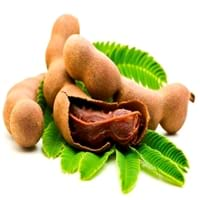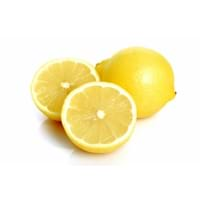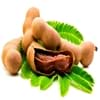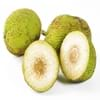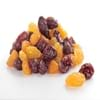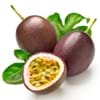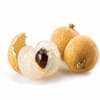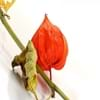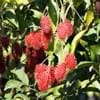Health Benefits
Boosts immune system, Boosts respiratory health, Cancer prevention, Digestive aid, Piles treatment
Arthritis treatment, Asthma treatment, Cancer prevention, Kidney stone treatment, Prevents constipation, Purging blood, Treatment of rheumatism
General Benefits
Beneficial in improving nerve function, Protects against parasites and worms, Relieves pain
Boosts immune system, Cures headache, Cures fever, Digestive aid, Flu treatment, Maintains healthy cholesterol level, Treatment of common cold
Skin Benefits
Anti-aging benefits, Brightens and lightens complexion, Exfoliates skin, Hydrates skin, Treatment of dark spots
Heals sunburn, Reduces wrinkles, Skin rejuvenation, Treatment of acne, Treatment of skin diseases
Hair Benefits
Prevents hair loss
Prevents hair loss, Treatment of dandruff
Allergy Symptoms
Abdominal pains, Breathing difficulty, Dizziness, Eczema, Fainting, Hives, Itching, Nasal congestion, Swelling of face, Tingling sensation in mouth, Vomiting
Eczema, Hives, Inflammation, Itching, Skin rash, Swelling
Side Effects
Decrease in blood sugar levels, Induces acid reflux, Allergic reaction, Tooth decay, May form gallstones
Diuretic effects, Heart burn, Tooth decay, Chances of sunburn
Best Time to Eat
Along with meal, As a snack in the late afternoon, Don't consume at night and before bed, Strictly avoid empty stomach
Along with meal, Best to drink lemon water on an empty stomach., Don't consume at night and before bed
Vitamin B5 (Pantothenic Acid)
Vitamin C (Ascorbic Acid)
Vitamin K (Phyllochinone)
Phytosterol
Not Available
Calories in Fresh Fruit with Peel
Not Available
Not Available
Calories in Fresh Fruit without Peel
Calories in Canned Form
Not Available
Type
Tropical
Citrus, Tree fruit
Season
Spring, Summer
All seasons
Varieties
PKM 1, Urigam, Hasanur, Tumkur prathisthan, DTS 1 and Yogeshwari
Avalon Lemon, Bears Lemon, Buddha's Hand, Bush Lemon, Citron, Eureka Lemon, Dorshapo Lemon, Finger Citron and Fino Citron
Color
Brown, Reddish-brown
Yellow, Yellowish-orange
Inside Color
Brown
Yellow
Shape
Curving Cylinder
Round
Origin
Africa
China, India
Soil Type
Loam, Sandy, Sandy loam, Well-drained
Well-drained
Climatic Conditions
Humid to dry, Rainfall, Warm to hot climate
Hot, Sunny
Facts about
- Tamarind is used to prevent body odor.
- African children use the tamarind seeds in games.
- No cases of tamarind toxicity or allergy reported till date.
- Oil extracted from lemon peels is used for fingerboard of guitars.
- During Renaissance, ladies used lemons to redden their lips.
- Aroms of lemon decreases the level of stress hormones.
Other Countries
Africa, Australia, Brazil, China, Mexico, Nigeria, Sudan, Taiwan
Argentina, Brazil, India, Iran, Italy, Mexico, Spain, Turkey, United States of America
Top Importer
United States of America
United States of America
Top Exporter
Thailand
Mexico
Botanical Name
Tamarindus indica
Citrus limon
Synonym
Tamarindo, tamarindus
Not Available
Subkingdom
Tracheobionta
Tracheobionta
Division
Magnoliophyta
Magnoliophyta
Class
Liliopsida
Magnoliopsida
Species
Tamarindus indica
C. limon
Generic Group
Tamarind Sub
Citrus fruit
Difference Between Tamarind and Lemon
We might think that Tamarind and Lemon are similar with respect to nutritional value and health benefits. But the nutrient content of both fruits is different. Tamarind and Lemon Facts such as their taste, shape, color, and size are also distinct. The difference between Tamarind and Lemon is explained here.
The amount of calories in 100 gm of fresh Tamarind and Lemon with peel is Not Available and Not Available and the amount of calories without peel is 239.00 kcal and 29.00 kcal respectively. Thus, Tamarind and Lemon belong to High Calorie Fruits and Low Calorie Fruits category.These fruits might or might not differ with respect to their scientific classification. The order of Tamarind and Lemon is Fabales and Sapindales respectively. Tamarind belongs to Fabaceae family and Lemon belongs to Rutaceae family. Tamarind belongs to Tamarindus genus of Tamarindus indica species and Lemon belongs to Citrus genus of C. limon species. Beings plants, both fruits belong to Plantae Kingdom.
